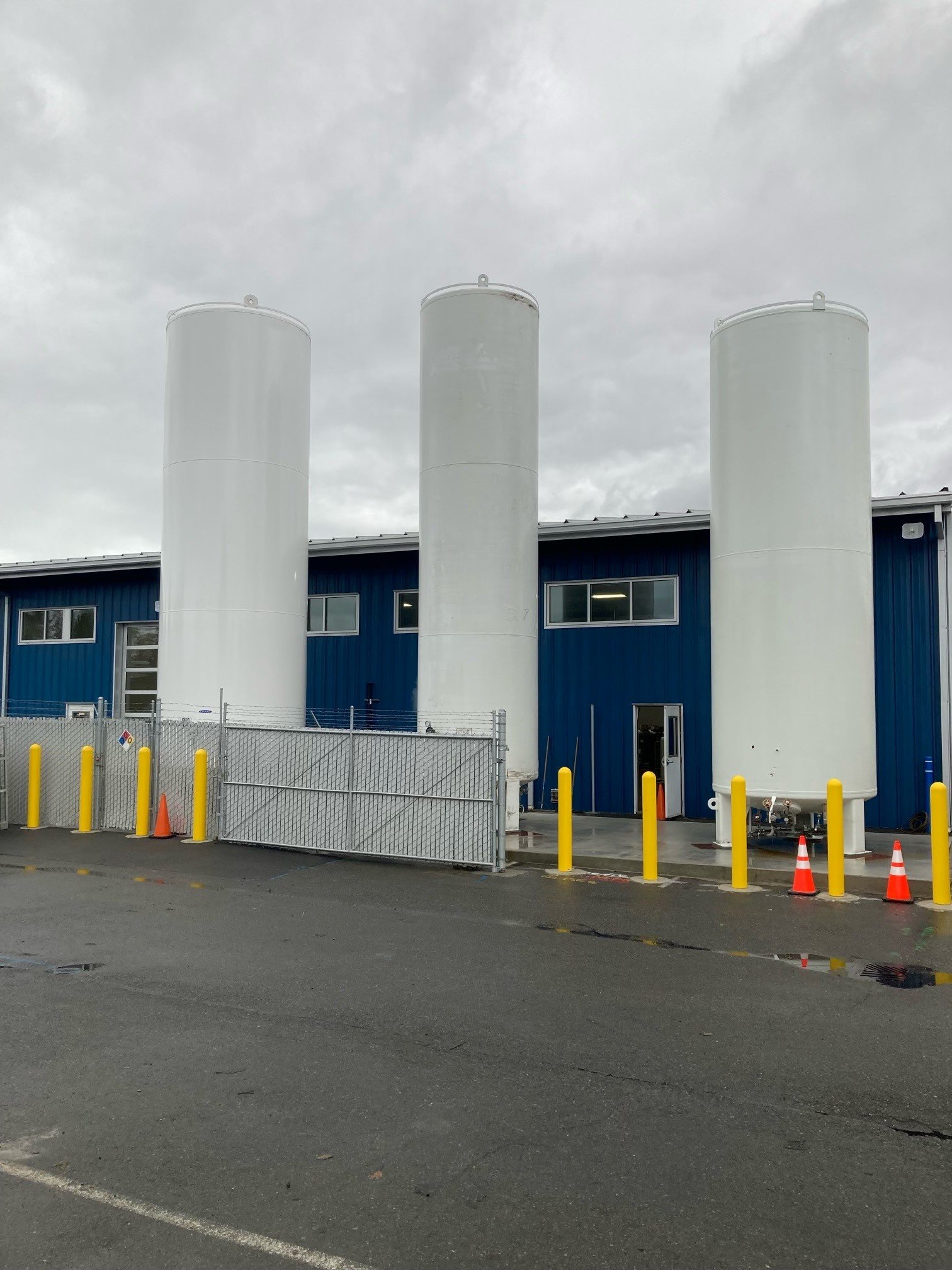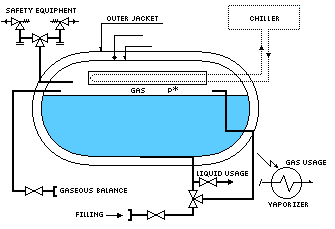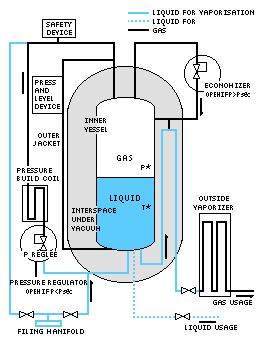Engineered Bulk Gas Systems
System Installation & Maintenance
Bulk Gas Delivery
Gas Monitoring & Reporting Systems
SURVEY:
We consider over 20 factors, including your company’s size and projected growth, gas usage, floor space, industry and security concerns.
DESIGN:
Using our extensive applications and engineering knowledge, we custom design a system for you.
INSTALLATION:
Our factory authorized technicians install your system and make sure everything is working correctly.
SERVICE:
Special gas training is provided to optimize new procedures. We install Wireless Telemetry to monitor your gas supply and replenish as needed to insure a continuous supply. We also work with you to adapt your system if your demand increases.
From these large storage tanks, products are typically delivered directly to customers in insulated cryogenic trucks. Most are transport by road, but we also transport by rail, ISO container, or boat.
Products are stored in liquid phase at different temperatures and pressures depending on the gas: about –190° C and atmospheric pressure for air gases; -20° C and 20 bars for Carbon Dioxide.
1 - Liquefied gases are stored at ultra-cold temperatures in a vacuum insulated tank. Controls on the tank keep the pressure of the liquid at optimum levels to assure proper liquid delivery to the application.
2 - Vacuum insulated piping connects the tank’s liquid withdrawal to the application equipment. The piping is the foundation for the system’s heat-loss efficiency and long-term integrity. It must be engineered to work with the associated controls and accessories.
3. A customized configuration of gas equipment controls and provides gas to other applications within the facility. Our Gas Specialists help to provide proper sizing for vaporizers, control manifolds, etc. to serve both a liquid and gas application from a single bulk tank liquid source.
4. The application equipment is designed to utilize liquid or gas at specific properties. The system design must take careful consideration of these requirements so the equipment meets the user’s performance specifications







